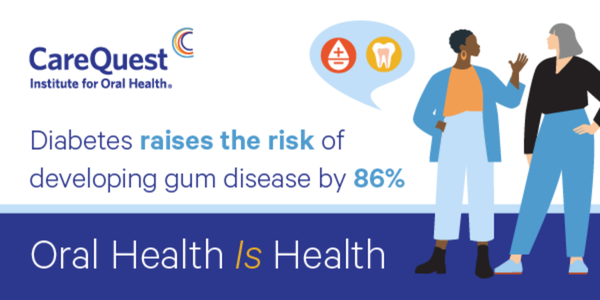|
|
 
|
Diabetes In Focus
| |
 |
| A retinal scan. (James Ebanks/Getty Images) |
A 5,600-person study in BMJ Open found that older adults with diabetes and higher blood glucose levels were three times more likely to develop eye disease over 14 years. "These findings show how important it is that people with diabetes are diagnosed and are supported in managing the condition, as this will reduce their chance of potentially debilitating eye disease," co-author Dr. Stephen Jivraj said. |
|
|

|
|
Diabetes raises the risk of gum disease by 86%, and patients with diabetes can have gum disease that is more severe. As providers, prioritizing oral health care can help close these gaps in care and improve patient outcomes.
|
|
|
|
|
|
 
|
Nutrition & Wellness
The US obesity rate has dropped to 37% from 39.9% three years ago, driven by increased use of injectable drugs such as semaglutide and tirzepatide, according to a Gallup survey. However, access to these medications remains a challenge, as many insurers plan to stop coverage next year, potentially increasing out-of-pocket costs for patients. |
|
A study in the Annals of Internal Medicine suggested that longer walks are more beneficial for heart health than shorter ones. Researchers found that walking 15 minutes or more, rather than doing multiple shorter walks, was associated with lower risks of heart disease and mortality over nearly a decade. The study involved 33,560 adults with a median age of 62. |
|
Women may need less exercise than men to protect against coronary heart disease, according to a study in Nature Cardiovascular Research. The study of more than 85,000 adults finds that women who engaged in four hours of moderate exercise weekly lowered their heart disease risk by 30%, whereas men needed eight hours for similar benefits. |
|
A study in JAMA Network Open suggests sleeping in total darkness may lower the risk of cardiovascular disease. Participants exposed to the brightest light at night had a significantly higher risk of heart failure, coronary artery disease and stroke. The study tracked nearly 89,000 people using wrist wearables to monitor light exposure. |
|
|
 | AI is the Future of Commerce. Stay Ahead.
AI isn't hype anymore—it's here. Join EPAM, Stripe, and commercetools to learn how to harness AI—responsibly and effectively. See how AI is reshaping the shopper journey, and learn why composability is key to doing it right. The brands moving first are already winning. Register now! |
|---|
| |
|
|
 
|
Practice Update
|
Public health experts are concerned that federal funding cuts for programs aimed at improving care for minority communities will widen racial health disparities. Grants have been terminated and federal and state offices focused on minority health have closed, causing states and nonprofits to struggle in maintaining health equity initiatives. "COVID revealed the impact of health disparities to individual health -- as well as how not addressing these disparities undermines the health system for everyone," said Georges Benjamin, executive director of the American Public Health Association.
|
|
| |
 |
| (Fauzi Muda/Getty Images) |
Research presented at a meeting of the American College of Gastroenterology found that 35.3% of patients with celiac disease have bile acid malabsorption, contributing to persistent diarrhea despite adherence to a gluten-free diet. The study found that patients who had a cholecystectomy had a greater likelihood of bile acid malabsorption, and those with bile acid malabsorption had faster colonic transit.
|
|
|
 | Be part of the growth in healthcare.
The growth in healthcare jobs offers opportunity, flexibility, and reward. Get the skills to get ahead with a certificate or degree from the University of Wisconsin. Healthcare admin, wellness, bioinformatics, and biotech. Flexible, 100% online. [Get Started] |
|---|
| |
|
|
 
|
Free eBooks and Resources
|
 
|
ICYMI: The Most Popular Stories From Our Last Issue
|
| | |
